Trimble
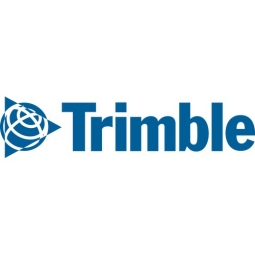
Overview
|
HQ Location
United States
|
Year Founded
|
Company Type
Private
|
Revenue
NA
|
|
Employees
|
Website
|
Company Description
Trimble is an industrial technology company, concentrated on helping the world work, better. Our technology enables jobs to get done more precisely and accurately so you can build, construct, grow and move the things we need to live our lives and build future communities.
Subsidiary
IoT Snapshot
Trimble is a provider of Industrial IoT analytics and modeling, cybersecurity and privacy, networks and connectivity, wearables, and functional applications technologies, and also active in the aerospace, agriculture, cities and municipalities, construction and infrastructure, oil and gas, recycling and waste management, transportation, and utilities industries.
Technologies
Use Cases
Functional Areas
Industries
Services
Technology Stack
Trimble’s Technology Stack maps Trimble’s participation in the analytics and modeling, cybersecurity and privacy, networks and connectivity, wearables, and functional applications IoT Technology stack.
-
Devices Layer
-
Edge Layer
-
Cloud Layer
-
Application Layer
-
Supporting Technologies
Technological Capability:
None
Minor
Moderate
Strong

Supplier missing?
Start adding your own!
Register with your work email and create a new supplier profile for your business.
Case Studies.

Case Study
IoT-Driven Maldives Airport Expansion by Beijing Urban Construction Group
Beijing Urban Construction Group (BUCG), a China-based international construction group, was contracted for a $440 million expansion and land reclamation project for the Maldives Airport. The project involved extensive land reclamation work, mass excavation, fine grading, and precise runway paving and compaction. The expansion required the removal of four million cubic meters of sand from the inner lagoon adjacent to the airport. The project also involved the construction of a new 3800 meter-long and 65-meter-wide runway, a fuel farm, a cargo complex, and a new terminal. The project faced tight parameters and required streamlined data flow and communication across the build. BUCG sought to improve safety and productivity, optimize operations, and complete the project on time and within budget.
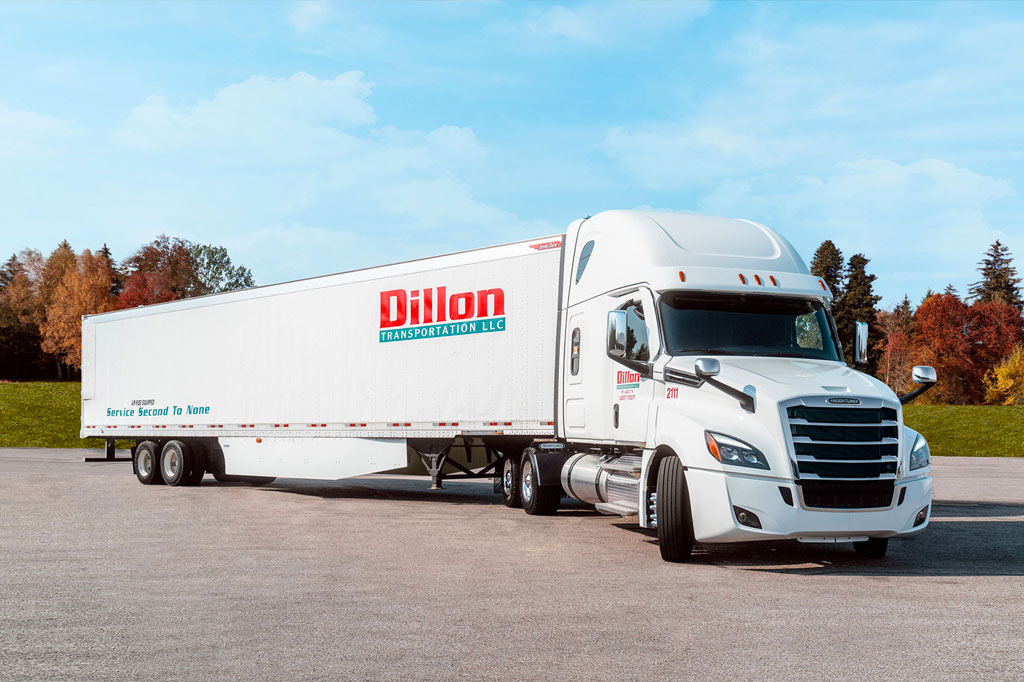
Case Study
Scalability Through IoT: Dillon Transportation's Growth with Innovative Access
Dillon Transportation, a dry van transportation company, experienced significant growth since its inception in 1996. From a humble beginning with one truck and two drivers, the company expanded to a fleet of 125 trucks and 170 drivers and crew members. However, this rapid growth brought about a challenge. The owner, Donnie Dillon, found it increasingly difficult to keep track of every driver and truck in his fleet. He could no longer remember the specifics of each trip, which he previously kept in his head. The company needed a more sophisticated way of storing information about drivers and loads. They required a system that would allow employees to access the specifics of each trip easily. The challenge was to find a solution that could manage the growing complexity of their operations.

Case Study
Digging Deeper Into the Connected Jobsite
Streamline digital connections between people, processes, and equipment.Today, this pioneering company continues to lead the way in both talent and modern technology deployment to deliver some of the industry’s most complex projects. With over more than 30 3D machine control systems that are used on dozers, excavators, motor graders, and skid steers; 30 rovers and total stations; and 50-plus base stations, the company maintains one of the largest technology-enabled fleets in the Upper Midwest.
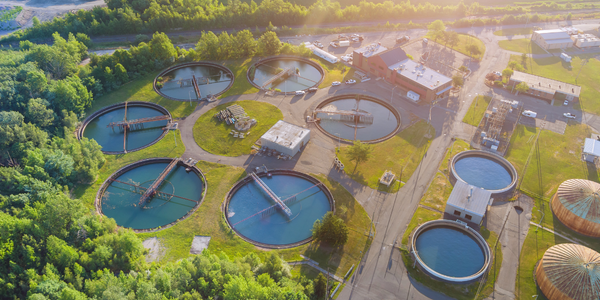
Case Study
IoT Implementation in San Francisco Public Utilities Commission: A Case Study
The San Francisco Public Utilities Commission (SFPUC), the third largest municipal utility in California, provides water, wastewater, and electric power services. The SFPUC manages an extensive wastewater system that collects, conveys, and provides secondary treatment to combined sewage flows within the City and County of San Francisco. However, like many utilities, SFPUC faces challenges such as environmental compliance, climate variability, aging infrastructure networks, financial shortages, and labor efficiencies. The SFPUC's environmental monitoring program is driven by regulatory compliance, calibration of the city-wide hydraulic and hydrologic (H&H) model, establishment of repair and rehabilitation prioritization, and real-time operational decision support. Other factors include early warning from collection system to plant operations, pre-development monitoring for upgrades, and forensic analysis of wet-weather and storm effects.

Case Study
Termotex S.A. Streamlines Workflows and Boosts Productivity with Trimble's Connected Construction Technology
Termotex S.A., an international company specializing in the design and assembly of industrialized insulating construction systems, was facing challenges in coordinating crews, deciphering blueprints, and matching 2D blueprints to the 3D construction at the site. The company had to rely on a project engineer and a quality control inspector on site, but this was often insufficient to avoid mistakes and clashes resulting from incorrect or outdated information. To overcome this, Termotex started creating Building Information Modeling (BIM) designs and switched to tablets instead of paper blueprints on the job site. However, the CEO, Andres Casanova, realized that a good BIM model alone was not enough to increase speed and precision in their construction projects. He sought a combination of technologies and new workflows that would enable automation and data-sharing from start to finish, and wanted to leverage mixed reality to better utilize their BIM models in the context of the actual job site throughout the entire construction process.
Case Study
Pennsylvania Turnpike Commission Enhances Sign Management with AgileAssets
The Pennsylvania Turnpike Commission (PTC) was faced with the challenge of managing over 30,000 signs spread across more than 600 centerline miles of highway. The task of ensuring that the latest and best information was always available on this large inventory of signs was daunting. The PTC needed a system that could not only manage the sign inventory but also create work requests, interface with a third-party work order processing system, and keep the data on the signs current for better decision making. The challenge was further compounded by the need to capture and store more than 50 attributes for each sign.
Case Study
Optimized Pavement Treatment Projects Using AgileAssets® Pavement AnalystTM and Maintenance Manager
The New Mexico Department of Transportation (NMDOT) manages more than 25,000 lane miles of highway, nearly 3,000 bridges and culverts, 2,055 miles of railroad right-of-way, and 61 public-use airports. The department also oversees three international ports of entry, 32 rest stops, and 34 nationally designated scenic, historic, and recreational trails. NMDOT faced several challenges in optimizing its pavement treatment process. A primary concern was the operational challenge of developing and implementing the program throughout the state. The integration of the software with the department’s legacy pavement data-collection systems was another challenge. In addition, a significant challenge was the organization and management of statewide staff training.
Case Study
City of Austin Implements AgileAssets Pavement Management System
The City of Austin Public Works Department was faced with the challenge of managing their extensive road network, which includes 7,582 lane miles of pavement and 450 bridges, serving nearly a million city residents. The city's primary goal was to increase resource productivity and maximize pavement life at the lowest cost to taxpayers. The annual cost of maintaining the city’s infrastructure was approximately $12M for capital improvement projects, $13M for street preventative maintenance treatments, and $6M for routine roadway repairs like fixing potholes. The city planners needed a system that would allow them to make more informed, data-driven decisions on when, where, and how to tackle strategic and operational challenges, thereby achieving the highest possible return on their road network investments.
Case Study
LaDOTD's Transformation: From Handheld Devices to Mobile App for Efficient Field Work
The Louisiana Department of Transportation and Development (LaDOTD) was struggling with the limitations of handheld devices used for capturing field work. The devices had limited functionalities and required manual operations to upload work status. This included physically connecting the devices to docking stations for data synchronization. These processes were not only cumbersome but also led to data loss or inaccuracies. The inefficiency of these devices was slowing down task completion, affecting the overall productivity of the field crews.
Case Study
Illinois DOT's Transformation: Integrating Maintenance and Fleet Management Systems
The Illinois Department of Transportation (IDOT) was grappling with an outdated, in-house developed maintenance management system that was conceived in the late 1980s. While it was a pioneering system at its inception, mirroring the advanced features of the 1989 Oldsmobile Toronado Trofeo, it had become a bottleneck for the agency three decades later. The system was sluggish, had limited interfacing capabilities, and lacked robust reporting features. The agency was also burdened with numerous spreadsheets and manual paperwork required for job completion. The outdated system was not only holding back the agency's efficiency but also its ability to innovate and streamline its operations.
Case Study
Getting More Value from Fleet Assets with AgileAssets® Fleet & Equipment Manager
The Kentucky Transportation Cabinet (KYTC) was looking to enhance its fleet management system to improve fleet data collection and reporting and to maximize asset lifecycles. The KYTC team identified specific goals for the new fleet management system such as improving fleet efficiency, enhancing staff and systems reporting to identify the true fleet condition, improving fuel reporting to include usage and fuel economy, supporting utilization requirements and reassignments, and facilitating replacement scheduling. To accommodate KYTC’s fleet size (11,000+ vehicles and pieces of equipment) and the broad scope of enhancements, the project required specific development activities. In addition, meeting the system specifications required integration with third-party applications. KYTC also needed to manage staff training for 12 highway districts throughout the commonwealth.
Case Study
Streamlining Pavement Project Reviews Through Visualization
The California Department of Transportation (Caltrans) manages one of the largest state-owned road networks in the U.S., including more than 50,000 lane miles of roads and 13,063 state highway bridges. The agency wanted to implement a visualization tool within its deployment of AgileAssets® Pavement Analyst™, an advanced pavement management system (PMS) known internally at Caltrans as PaveM. The tool would facilitate the pavement project review process by displaying the relationships between the recommended projects and the currently programmed, under-construction, and as-built projects. Caltrans faced several challenges in developing and implementing the H-Chart project visualization tool. It needed to manage external development of H-Chart with the UCPRC, ensure the tool met specific requirements, and integrate the tool successfully with its PMS to access data for visualization and evaluation.
Case Study
Simplifying Damage Restitution at Minnesota DOT
The Minnesota Department of Transportation (MnDOT) was filing insurance claims seeking millions of dollars in infrastructure damage restitution annually. The process for recording and documenting damage claims was very detailed and time-consuming. To calculate the cost of these claims, MnDOT staff members were using data from different IT systems. Detailed damage repair information was not part of the agency’s day-to-day work reporting programs. MnDOT had previously developed a standalone computer application to be used statewide by damage restitution specialists. However, the claim submission process required re-entering the same data up to four times on different forms before the claim could be filed. In addition, without a single source of accurate data, MnDOT was using classification averages to calculate the costs of labor for damaged-property repairs, resulting in reimbursement of only 45% to 60% of the actual labor costs.
Case Study
Enhanced Decision-Making Through Optimization Analysis with AgileAssets® Pavement Analyst
DelDOT maintains about 14,000 lane miles of highways, 54 toll lanes, more than 1,700 bridges, and a wide range of other infrastructure assets. The department also oversees the Division of Motor Vehicles and the Delaware Transit Corporation, which operates DART First State, the state’s public transportation provider. To implement the new PMS, DelDOT needed to overcome several challenges. The main challenge was reconfiguring DelDOT’s engineering decision-making framework to take advantage of automated data-collection processes. Another challenge was to address existing limitations in converting raw distress data into deterioration indices. DelDOT also had to develop performance models, treatments, and decision trees to support its new optimization analysis efforts. In addition, the department needed to integrate the new PMS with existing data collection tools and legacy systems. A final challenge was training staff on how to effectively use the new PMS.
Case Study
Creating a 4-Year Pavement Management Plan with AgileAssets® Pavement Analyst™
The Texas Department of Transportation (TxDOT) manages one of the largest and most heavily traveled road networks in the United States, with 80,444 centerline miles of roadway and 54,180 bridges located in its 25 highway districts. The state sees 197.4 billion annual vehicle miles traveled (VMT) on state-owned highways. Maintaining statewide transportation assets and providing a high-quality road system are vital for the state’s economy and public safety. To contain the costs of managing its road network, TxDOT applies innovative asset lifecycle management strategies to preserve and restore the condition of roadway assets. Texas legislation requires that TxDOT annually provide the state’s Legislative Budget Board and the Governor with a detailed plan for the use of transportation funds. The plan must include pavement condition targets and a district-by-district analysis of how proposed maintenance spending will impact pavement scores.
Case Study
Optimized Pavement Maintenance and Rehabilitation with AgileAssets® Pavement Analyst
The Texas Department of Transportation (TxDOT) was managing over 80,000 centerline miles of roads that support more than 500,000,000 daily vehicle miles traveled. The TxDOT pavement program is very large, and it’s growing rapidly to accommodate a fast-growing state population. Beyond the sheer size of its pavement program, TxDOT also faced the challenge of completing the migration from an environment comprised of four standalone applications to a new, comprehensive PMS in a very short time frame. Additional challenges included the need to develop a new Geographic Information System (GIS) module and to train the staff of numerous statewide districts on how to most effectively use the new PMS.
Case Study
Improved Pavement Planning & Maintenance Operations
The Texas Department of Transportation (TxDOT) manages a vast network of roadways across 254 counties. In 2011, TxDOT began using AgileAssets® Maintenance Manager™ as its maintenance management system of record. Five years later, the agency moved to advance its asset management practices even further by deploying a state-of-the-art PMS, AgileAssets® Pavement Analyst™. However, these two solutions were implemented as separate systems, leading to a lack of data sharing between pavement management and maintenance management functions. The pavement management staff often lacked up-to-date information about pavement work history and work type. Efficiency lagged due to a lack of coordination between recommended work plans and actual maintenance projects.
Case Study
Norwegian Survey Company Revolutionizes Power Line Adjustments with Real-Time Surveying Technology
In Norway’s Sogn og Fjordane County, energy companies faced challenges with traditional survey methods for adjusting the sag of newly constructed power lines, especially in the mountainous terrain of Leikanger. The landscape and long spans made it difficult to use conventional techniques, which often required several days to complete. Geomatikk Survey was tasked with measuring and adjusting the sag of a new 450-meter section of power lines installed by BKK Enotek. The initial plan was to use the Trimble SX10 scanning total station to acquire measurements and process the data in the office. However, the discovery that the SX10 could automatically lock onto the power lines without a prism allowed for real-time adjustments directly in the field, significantly reducing the project timeline.
Case Study
Precise Positioning Provides “Superpower” Efficiency and Accuracy in Agricultural Research
Agrochemical companies need to conduct ongoing research to develop and improve their products, which involves measuring the performance of crops treated with new additives. Traditionally, this task was performed manually by technicians in the field, examining individual plants using measuring sticks and clipboards. This process is tedious and requires skilled scientists to spend hours in the field collecting data, which could be better spent on analysis and interpretation. The challenge is to replace these in-field evaluations with a more efficient and accurate method that can provide high-resolution imagery and industry-standard ratings on crop performance.
Case Study
Auckland Motorway Alliance Enhances Road Management with GPS Technology
The Auckland Motorway Alliance (AMA) was tasked with managing Auckland’s extensive motorway network, which included maintaining roads, managing vegetation, and ensuring environmental compliance. The existing processes for asset management, particularly for vegetation, were outdated and inefficient, relying heavily on manual data collection and paper-based systems. This led to inaccuracies, human errors, and significant time consumption. The AMA needed a more efficient, accurate, and cost-effective solution to manage its assets and improve operational efficiency.
Case Study
Surveying Underground: Overcoming Challenges in Mining International's Limestone Quarry
The task of conducting a topographic survey in Mining International’s limestone quarry in Joliet, Illinois, presented several challenges. The tunnel, which is 488 meters long, 7 meters high, and 6 meters wide, was originally used by large dump trucks to transport rock to the surface. However, as the mine expanded, a crushing plant was built, and a conveyor belt was installed to transport the crushed rock to the surface. The conveyor was hung from the tunnel ceiling to minimize disruptions, necessitating profiles of the tunnel’s ceiling for offsite system construction. V3 Companies faced challenges such as absolute darkness, transport issues, working on high platforms, and establishing control in a highly variable environment. Heavy truck traffic and daily road grading ruled out control set in the tunnel floor, requiring innovative solutions for control point establishment.
Case Study
Innovative Surveying Techniques for Riverside Drive Parking Deck in Elgin, Illinois
The Riverside Drive Parking Deck in Elgin, Illinois, built in the mid-1960s, is a large structure approximately 1,000-ft long by 60-ft wide, situated over the Fox River. The deck is supported by hundreds of concrete piles reinforced with high-tensile steel wire, which has started to rust over time. In 2003, a significant piece of the deck fell into the river, prompting Elgin officials to analyze the deck for potential reuse in ongoing waterfront renewal projects. This required innovative survey work under the deck and in the Fox River, a task assigned to V3 Companies, Ltd., a multidisciplined consulting firm. The challenge was to conduct a thorough survey in a shallow river environment, where traditional survey setups could not be revisited, and to gather comprehensive data for analysis.
Case Study
California Hospitals Seismic Safety Laws: Instrumentation of the New San Francisco General Hospital
California is the most seismically active state in the USA, having experienced numerous catastrophic earthquakes, including the devastating 1906 San Francisco quake. In response to these seismic threats, California has implemented stringent building codes, particularly for critical infrastructure like hospitals, to ensure they remain operational after major earthquakes. The Alfred E Alquist Seismic Safety Act of 1983 mandates that acute care hospitals built after March 1973 must withstand major earthquakes and remain functional immediately afterward. The 1994 Northridge earthquake highlighted the poor performance of pre-1973 hospital buildings, prompting a program of retrofits and rebuilds to ensure compliance with seismic safety standards. The California Strong Motion Instrumentation Program (CSMIP) was established to record ground and structural shaking during earthquakes, aiding in emergency response and improving building codes. However, at the time of the 1989 Loma Prieta earthquake, no hospitals were instrumented, underscoring the need for enhanced seismic monitoring in healthcare facilities.
Case Study
Mapping Road Signs in Belgium: A Comprehensive Mobile Mapping Project
The Infrastructure Department of the Flemish Region in Belgium faced the challenge of accurately mapping an estimated 350,000 road signs along 5,150 km of major roads. The goal was to gather detailed data on the number, type, size, color, location, and condition of each road sign to enhance their GIS database. This task required a sophisticated approach to ensure precision and efficiency, given the vast number of signs and the extensive road network involved.
Case Study
EC Electric Saves 90% in Labor with Trimble 3D Scanning and Modeling
EC Electric faced a significant challenge during the expansion and renovation of the Chambers Creek Wastewater Treatment Plant near Seattle, WA. The project required creating a virtual model of the facility using Building Information Modeling (BIM) and 3D as-builts as part of the project closeout. The accelerated schedule and the high cost of $250k for data capture alone prompted EC Electric to seek alternatives to reduce labor and improve modeling speed and accuracy. The company needed a solution that could help them save significant labor costs and complete the project within the tight schedule.
Case Study
Bringing 3D Scanning to Guatemala: Rumbo Norte Ingenieria Expands Business with Trimble
For Ulises Sanchez, CEO of Rumbo Norte, a combination of the best people, processes, and technology is the key to success. With over 19 years of experience and a passion for the measurement, analysis, and management of spatial data, he began pursuing a master’s degree in Geomatics in 2014. Through that experience, Sanchez realized the industry was undergoing a transformation that could also impact Rumbo Norte. He saw businesses like theirs using 3D laser scanning technology to more quickly capture very detailed data points. He knew that they could win more business and expand by putting the same technology in place. At that time, most of Rumbo Norte’s work was focused on traditional surveying using total stations. 3D laser scanning would open up new lines of business for Rumbo Norte and bring more efficiency, speed, and accuracy to its work.
Case Study
Utility Uses Trimble Technology to Develop Accurate GIS Database of Medium-Voltage (MV) Network
EDB, Serbia's largest utility, faced challenges with an outdated graphical mapping system for its medium-voltage network. The existing system was a mix of paper-based surveys, CAD files, and aerial photos, which made it difficult for EDB's 1,700 employees to efficiently service and repair equipment. The organization needed a comprehensive, enterprise-wide GIS database to improve maintenance and network planning. The goal was to create a single database with accurate data entry that could be accessed via the web by all employees and related public departments.
Case Study
James E. Roberts-Obayashi Corporation Streamlines Construction Processes with ProjectSight Platform
The James E. Roberts-Obayashi Corporation, a general contractor in the San Francisco Bay area, faced the challenge of finding a secure and central digital platform for document management, communication between stakeholders, reporting, and data collection. The solution needed to be affordable and compatible with existing accounting and other systems. The company was looking for a platform that could integrate seamlessly with their operations and provide real-time access to cost data, transaction history, and potential impacts. The challenge was to find a solution that could streamline processes and improve efficiency without incurring prohibitive costs.
Case Study
Counting Crowns in Nepal: Mapping Vegetation and Land Cover with eCognition Software
Intent on improving Jumla’s plight, MoAC in 2010 launched the three-year High Mountain Agri-business and Livelihood Improvement (HIMALI) project. Specifically targeting two watersheds, one of which was the Lorpa watershed, HIMALI’s goals were to enhance the communities’ socioecological resilience to climate change and help design effective local watershed management plans to ensure the sustainability of agribusiness in the region. To identify and recommend solutions, project managers needed to better understand Lorpa’s present vegetation and how its land cover—specifically the forests—had changed over time. Given its geographic isolation, acquiring that picture with traditional, physical surveys would not be feasible. In order to both assess and map the area’s tree cover from the past to the present, the project team needed to have geospatial imagery and image analysis technology that would allow them to classify the vegetation, inventory the forest cover down to the tree-crown level and map that over time. The land classification solution also needed to be able to sufficiently handle the complexities of comparing and classifying vegetation within the challenging mountainous environment of steep slopes and dramatic changes in vegetation.
Case Study
Ground Developments Enhances Scottish Wetlands Project with Trimble Technology
Ground Developments (GDL) was tasked with carrying out specialist geotechnical and remediation work for the Cowdenbeath Wetlands Project initiated by Scottish Water. The project aimed to treat heavily-polluted stormwater from two separate overflow streams in the area. GDL was appointed by Barhale Construction to evolve a remediation scheme and construct technically challenging geotechnical solutions for the wetland treatment facility. The surrounding wetland area was also selected to be transformed into an ecosystem that adds to the diversity of wildlife in the area. To achieve greater efficiencies, GDL sought the help of its technology partner SITECH and Trimble. The challenge was to manage, analyze, and process construction data effectively to ensure high-quality work and timely completion of the project.
Case Study
Advanced Scanning Technology Revolutionizes Restoration of Historic Dutch Village
Franeker, a historic town in the Netherlands, required a comprehensive 3D model for the design of new lighting to highlight its architectural heritage. The challenge was to create accurate as-built surveys of structures dating back to the 1600s, where few record drawings existed. Traditional manual methods would have been time-consuming and costly, taking months to complete. The need for precise representations for repair and restoration of historical buildings was critical, and existing methods were insufficient to meet the demands of modern architectural clients.
Case Study
Virginia Department of Transportation's Success with RFID and GPS for Utility Mapping
The Virginia Department of Transportation (VDOT) faced significant challenges with inaccurate as-built utility maps, which often led to costly delays and potential safety hazards during construction projects. In the rapidly growing Northern Virginia area, discrepancies in asset maps were common due to poorly mapped locations of new pipes and cables, unrecorded field modifications, and outdated design drawings. These inaccuracies could result in construction crews being idled, expensive relocations, and fines for road closures during peak traffic times.
Case Study
French Innovators Enhance Underground Utility Management with Augmented Reality and Precise Positioning
Enedis, a major electric distribution company in France, manages a vast network of electric lines, including a significant portion underground. A critical challenge for Enedis is to minimize the response time required to address issues affecting the reliability and quality of electric power delivered to its customers. When a problem is reported, Enedis conducts an 'intervention' to locate and repair the affected lines. This process involves dispatching field technicians who rely on GIS-generated maps to approximate the locations of underground lines. However, the traditional method of using paper or tablet maps and injecting signals into lines to pinpoint issues is time-consuming and must be completed before excavation and repairs can begin. Enedis sought to leverage cutting-edge technology to improve efficiency and reduce the time required for these interventions.
Case Study
Trimble Earthworks Excavator Automatics Functionality Increases Operator Speed and Accuracy
Danish contractor M.J. Eriksson was tasked with constructing a new highway, including a bridge across the Roskilde Fjord in Denmark. The project required precise grading to meet design specifications, which was challenging due to the varying experience levels of the operators involved. The company wanted to evaluate the productivity and accuracy improvements that could be achieved using Trimble Earthworks Grade Control Platform with excavator automatics. The challenge was to ensure that both experienced and less experienced operators could achieve the required grading accuracy and productivity, thereby reducing time and costs associated with the project.
Case Study
North American Roofing Enhances Fleet Operations with Trimble Fleet Management
With crews dispersed throughout the country, North American Roofing needed a way to track drivers and their vehicles to improve efficiency, productivity, and compliance with Department of Transportation regulations. The company was especially interested in Fleet Management’s integrated Driver Logs tool, which keeps track of each driver’s miles and hours on the road to comply with regulations such as Department of Transportation Hours of Service (HOS) requirements. Previously, drivers were logging their hours manually, which is time-consuming and error-prone. The government became stricter about enforcing regulations for commercial vehicles after the 9/11 terror attacks, and in 2011 the DOT enacted more stringent HOS regulations for drivers. Violations, which are often caused by improperly filling out driver logs, can lead to hefty fines, something every company wants to avoid.
Case Study
Using eCognition to Detect Solar Potential
To achieve its mission to provide an on-demand, e-commerce system that could provide customized solar analytics, Geostellar first needed to have building vectors, the crucial data layer that would enable it to create precise maps and 3D models of all 3,143 counties in the US. Those foundational layers would then allow its system to map any rooftop’s solar potential in real-time. With millions of building footprints to map nationwide, a manual process of identifying and delineating buildings would not be feasible. Geostellar required an image analysis system that would almost completely automate the land classification process. And since each environment would present unique classification challenges, the solution needed the intelligence to quickly and accurately distinguish different structures from vegetative types and map out only buildings. In addition, although Geostellar would predominantly use LiDAR imagery for extracting buildings, not every county in the US has LiDAR data available. So the company also required a flexible system that could easily ingest and accurately classify imagery of variable quality.
Case Study
PeopleNet's Tailored Solutions Rings up $50,000 Annual Savings for Carolina Cargo
Carolina Cargo faced a significant challenge in managing the workflow of receiving broker orders. The existing process required drivers to make unscheduled stops at truck stops to receive faxed orders, which was both costly and time-consuming. Each fax cost the company over $7, and with 120 trucks receiving one fax per week, the annual cost for faxes alone was nearly $46,000. Additionally, the out-of-route miles incurred by these unscheduled stops added to the operational costs, further straining the company's resources. The inefficiency of this process not only increased costs but also impacted driver productivity and safety, as drivers spent unnecessary time at truck stops, which are known to be high-risk areas for accidents.
Case Study
Emerald Coast Utilities Authority Utilizes GPS for Efficient Hurricane Recovery
In 1995, Hurricane Opal caused significant damage to Pensacola, Florida, with utility workers struggling to locate buried assets using metal detectors and paper maps. This led to inefficiencies and further damage during recovery efforts. Nine years later, Hurricane Ivan struck with even greater force, threatening to repeat the same challenges. The Emerald Coast Utilities Authority needed a more effective way to manage and recover utility assets buried under debris and sand after such natural disasters.
Case Study
Shred-it Enhances Fleet Efficiency and Safety with Trimble Technology in the UK
Shred-it faced challenges in managing its fleet of over 100 vehicles in the UK, lacking real-time visibility into vehicle locations and driver performance. This lack of visibility hindered their ability to ensure the security of confidential materials and meet customer expectations. Additionally, there were concerns about driver safety, accident risks, and high fuel costs due to inefficient driving behaviors. Without diagnostic information on fuel use or vehicle health, Shred-it struggled to control unnecessary operational costs.
Case Study
Atlantic Tower Services Enhances Fleet Management and Reduces Costs with Trimble Technology
Long-term customer relationships require delivering quality service fast and efficiently. As ATS grew rapidly, so did its challenges in achieving that goal. The company decided it needed a GPS-based fleet management system to improve service delivery. In 2012, ATS chose Trimble Fleet Management, a cloud-computing platform that provides visibility into day-to-day field service operations. The system helps manage areas such as speeding, driver safety, customer service, back-office administration, fuel use, and vehicle efficiency. Chief among ATS’ goals was identifying which truck is closest to a cell tower when service is needed so a vehicle can be dispatched as quickly as possible.
Case Study
Built With GNSS: A Busy Port’s First GIS
Prior to 2016, Port NOLA had no enterprise GIS, GIS software, or dedicated GIS staff. The port relied heavily on manual and CAD drawings, engineering plans, and institutional knowledge held by employees. This posed a significant challenge, especially when employees retired or were unavailable. The acquisition of a shortline railroad added more records, complicating the situation. The port needed to map critical infrastructure like crane rails, tiedown points, and utilities to improve security and disaster response. The lack of a comprehensive GIS system made it difficult to manage these assets effectively.
Case Study
3D Models Keep I-94 Project on Time
The I-94 North-South Freeway Project in Wisconsin faced significant challenges due to its scale and the need for rapid execution. Initially divided into numerous sections, the project was accelerated by the American Recovery and Reinvestment Act (ARRA), which combined the independent projects and advanced the start date to mid-2009. This restructuring nearly halved the construction time for some portions, but it also introduced complexities in accurately interpreting construction plans and maintaining a comprehensive view of the entire project. The challenge was to manage these complexities while ensuring the project stayed on schedule and within budget.
Case Study
Pon Cat Boosts Technician and Billing Efficiency with Trimble PULSE
Pon Cat faced challenges in improving their service scheduling and dispatching process, which was becoming a bottleneck due to the manual scheduling of approximately 1000 technicians. The dispatchers and technicians used separate systems, causing inefficiencies and non-billable hours. Additionally, the time to generate invoices post-job completion was lengthy, leading to delayed service revenue and invoice disputes. There was also a 6% gap between work hours paid to technicians and hours billable to customers, resulting in missed service revenue.
Case Study
Hoar Construction Enhances Cost Estimation with Trimble WinEst and Modelogix
Established in 1940, Hoar Construction is a national contractor driven by the relentless pursuit of improvement. The company provides construction management, general contracting, program management, preconstruction and design-build services to customers across the country always looking for better, more efficient ways to build. Well known for its ability to successfully execute even the most challenging projects, Hoar finds solutions through its exceptional planning and attention to detail. The drive to never settle has made Hoar an industry leader whose creative problem solving has earned a reputation for safety, quality and efficiency. It has also earned the company a ranking among the top construction management and retail construction firms in the United States. Company leaders wanted to establish a more standardized and efficient cost estimating process to better support customers and to help deliver smarter and more cost-effective construction solutions.
Case Study
North Mechanical Cuts $1 Million in Shared Costs for Lab Building Project by Speeding Design, Fabrication and Install with Trimble SysQue
North Mechanical was tasked with speeding up the design and fabrication workflow for a research facility build. Traditionally, manual processes were used for creating piping, fittings, and accessories, which were tedious, error-prone, and inefficient. The company needed to eliminate these manual steps to improve accuracy and efficiency from fabrication to installation. The challenge was to create a more automated and accurate fabrication workflow to reduce labor and material costs, improve design accuracy, and shorten project timelines.
Case Study
Dutch Contractor Megens Installations Boosts Productivity with Robotic Positioning Tool
The main challenge faced by Megens Installations was the effective transfer of knowledge from the office to the construction site. Despite having all the necessary information, the difficulty lay in sharing it efficiently with mechanics on the ground. The time-consuming process of translating 3D model information into actionable data for construction workers was a significant hurdle. Mechanics often struggled with interpreting complex printed 3D drawings while still relying on 2D drawings on-site. Additionally, the initial layout of MEP systems was a challenging task, requiring significant knowledge and experience. Mechanics were spending valuable time measuring instead of focusing on their primary task of installation.
Case Study
Southland Industries Performs 30% Faster Layout on Massive LAX Project with Trimble GNSS Technology
In 2019, Southland Industries' Southern California Division was awarded a contract to develop a consolidated car rental facility at the Los Angeles International Airport (LAX). The project was substantial, covering roughly seven million square feet, and required consolidating existing rental car companies into one location. Southland was responsible for all mechanical HVAC and plumbing, including storm, sanitary waste, and vent systems. The scale of the project presented unique challenges, particularly in terms of layout, as the plumbing alone was measured in miles. Traditionally, Southland used Trimble Robotic Total Stations (RTS) for layout, but the massive size of the LAX project necessitated a faster and more precise solution. The need to work quickly and accurately led Southland to explore alternative technologies that could streamline their workflow and improve efficiency.
Similar Suppliers.

Supplier
Cisco
Cisco designs and sells broad lines of products, provides services, and delivers integrated solutions to develop and connect networks around the world, building the Internet. Over the last 30 plus years, they have been the world’s leader in connecting people, things, and technologies - to each other and to the Internet - realizing their vision of changing the way the world works, lives, plays, and learns.Today, Cisco has over 70,000 employees in over 400 offices worldwide who design, produce, sell, and deliver integrated products, services, and solutions. Over time, they have expanded to new markets that are a natural extension of their core networking business, as the network has become the platform for automating, orchestrating, integrating, and delivering an ever-increasing array of information technology (IT)–based products and services.Subsidiaries/ Business Units: - Jasper - OpenDNS - CloudLock

Supplier
Huawei
Huawei is a global leader of ICT solutions. Huawei's strategy in the enterprise domain focuses on close cooperation and integration with partners to deliver a wide range of highly efficient customer-centric ICT solutions and services that are based on a deep understanding of customer needs. In line with their portfolio covers enterprise networking, unified communications & collaboration (UC&C), Cloud Computing & data center, enterprise wireless, network energy and infrastructure services.
---nyse--ge_1.jpg)
Supplier
General Electric
GE is a diversified specialty equipment, infrastructure and financial services company. Their products and services range from aircraft engines, power generation, oil and gas production equipment, and household appliances to medical imaging, business and consumer financing and industrial products. GE believes new technologies will merges big iron with big data to create brilliant machines. This convergence of machine and intelligent data is known as the Industrial Internet, and it's changing the way we work. Year founded: 1892 Revenue: $148.5 billion (2014) NYSE: GE Featured Subsidiaries/ Business Units: - GE Digital - GE Predix - GE Intelligent Platform - Wurldtech
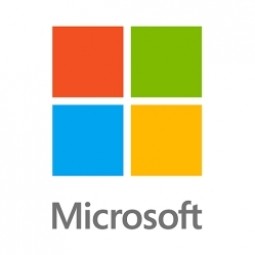
Supplier
Microsoft
Microsoft develops, manufactures, licenses, supports and sells computer software, consumer electronics and personal computers and services. Its best known software products are the Microsoft Windows line of operating systems, Microsoft Office office suite, and Internet Explorer and Edge web browsers.Year Founded: 1975Revenue: $93.6 billion (2014)NASDAQ: MSFT
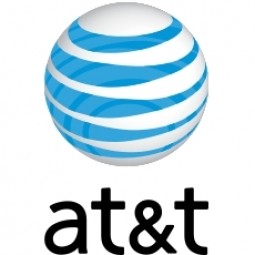
Supplier
AT&T
AT&T is the second largest provider of mobile telephone and the largest provider of fixed telephone in the United States, and also provides broadband subscription television services. The company's corporate, government, and public sector clients use its conferencing, managed network, and wholesale communications services.








